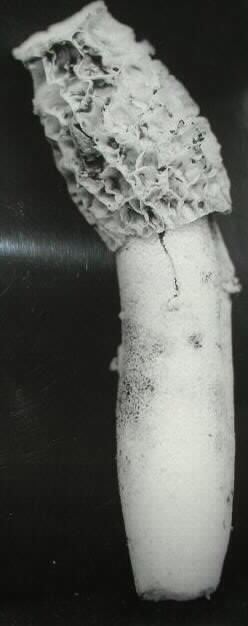| 11-12-02
On an early fall day a few years back an Indianapolis West Side wild
mushroom enthusiast jangled my phone with what he thought was exciting
news about morel mushrooms.
"Do morels come up in the fall," he asked excitedly . . . "I think I
have some in my side yard."
Describing the mushroom as having long stems and caps that looked a
lot like the caps of morels, he asked if they could be morels.
"They could be," I said, remembering that it is not wise to ever say
never when one is dealing with Mother Nature's creations, "but they probably
are not morels . . . could be stinkhorns," I answered.
I laid a few more stinkhorn characteristics on the caller: Did they
smell? Were they a little slimy? Did they attract flies? Did they have
a hole in the center of the cap that looked a little like the mouth of
a carp or a sucker?
Well, maybe, the caller thought, to all of my questions.
Undoubtedly stinkhorns, was my opinion. But I would be out late in the
afternoon to check them out.
They were, indeed stinkhorns (Phallus impudicus). But they were
one of the best stands of this interesting fungus I had ever seen . . .
nice clickin' for the shutter of my camera.
| Unlike
morels, stinkhorn mushroom characteristics include an unpleasant odor.
They are also a little slimy, attract flies and have a hole in the center
of the cap that looks a little like the mouth of a carp or a sucker. |

|
Although the cap of the stinkhorn does somewhat resemble the pitted
and ridged cap of the morels, the stinkhorn cap is much more fragile .
. . even lacey. Stems usually are white or cream colored and usually are
somewhat smaller at both ends than in the middle, The earth end of stems
may be cupped, somewhat like those of the Amanita family. Caps may
run from tan to light brown or even greenish.
The stinkhorn may have an unsavory odor and an appearance to match,
but it is not poisonous. |

